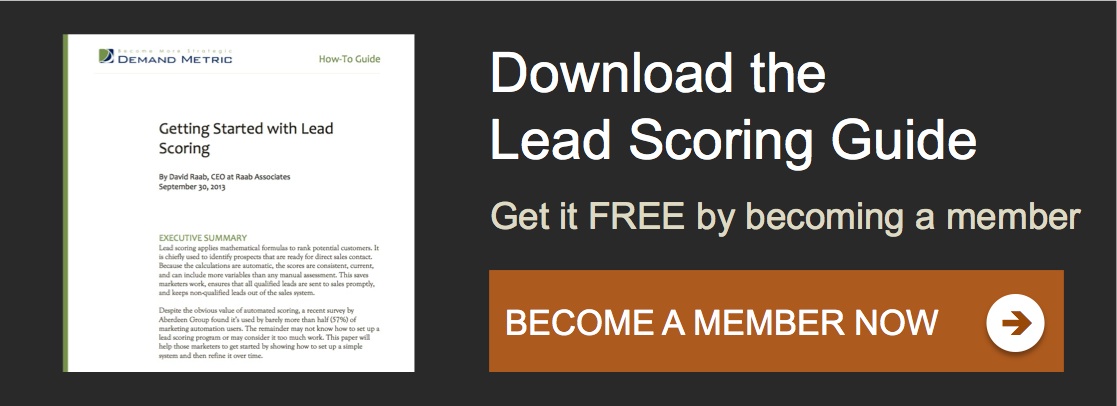How to Find and Select the Right Leads
Are you trying to find leads that will eventually become customers or are you trying to find leads that sales will accept and pursue? The groups are not necessarily identical: sales might like leads from big companies where a deal would be large even if the probability of success is low; or they may prefer small deals that will close quickly; or they might accept marginal leads physically near existing accounts. Chances are it’s a mix of all those considerations and more.
Since the first goal is a scoring system that is accepted by sales, you should start with scores that identify leads that sales will want. Once the scoring system has more credibility and you have more historical data available, you can try identifying additional leads that are worth pursuing even though sales would have ordinarily rejected them. But that comes later.
Fitness measures: The simplest way to identify leads that sales will accept is to look at leads which sales has already accepted. Pull a sample of accepted and rejected leads from the CRM system and review them with sales to identify the characteristics that led to sales’ decision. You’ll probably end up with a small number of “demographic” traits such as industry, company size, and personal title. Location is often on the list, especially when in-person sales calls are common. Demographics might be supplemented by traditional “BANT” qualifiers: budget (is this a budgeted purchase?), authority (can this person make the purchase decision?), need (does the company need your product?), and timeline (when is the purchase likely to happen?). But accurate BANT information is often not available until later in the buying cycle.
Demographics and BANT are both measures of “fit”, which is whether someone looks like a potential customer.
Engagement measures: Many salespeople have been trained to immediately contact every high-fit lead they see. But a marketing automation system will often capture many more leads than a salesperson has been getting, including many at an earlier stage in the purchase cycle. So even if the sales department doesn’t raise the issue, you may want your scoring system to filter out leads who are not ready for a sales contact.
This contact-readiness is generally called “engagement”. It is measured by looking at behaviors captured in the marketing automation system, including Web site visits, email responses, Webinar participation, and downloads. Most of this information has not previously been available to salespeople, which is another reason they are unlikely to suggest including it in a scoring formula. Marketers may wish to bring up some hypothetical examples to drive home the value of screening on engagement: “Do you really want to call someone who has only downloaded one white paper and not opened four emails in the past month?”
Sales will probably agree that leads should reach some sort of engagement threshold, such as a 10% likelihood of making an appointment. You may not be able to calculate this at first, but you can later track actual results and adjust the engagement standards to match the target. If the data is available, supplement your engagement threshold with an estimate of how many leads it would require the salesperson to follow up.
To read the rest of this How-to Guide, become a Demand Metric member today!
Demand Metric’s How-To Guides are designed to provide practical, on-the-job training and education and provide context for using our premium tools & templates.


